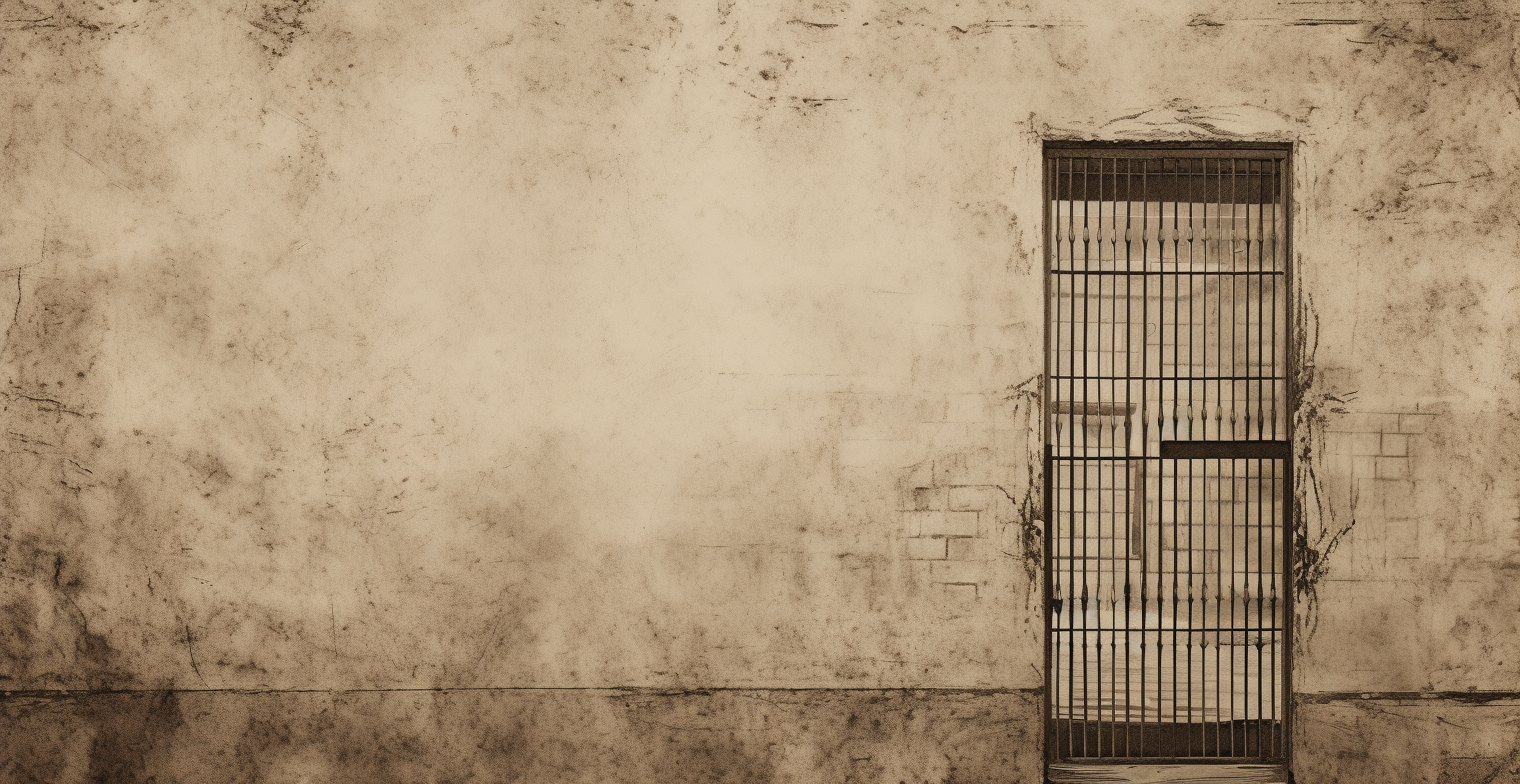Walking the Torrance County Detention Facility


The names of the detainees and guards referenced in this story have been changed or redacted to avoid retaliation against those who spoke with the Mountainair Dispatch or Torrance County Commissioner Samuel Schropp.
From the outside, Torrance County Detention Facility (TCDF) is surrounded by multiple perimeters of razor wire and electronically controlled access gates. The building is squat, with few windows. Once inside, double doors lead past a metal detector into the main hallway off which all cellblocks branch. Signs on the doors invite veterans employed by CoreCivic, which manages TCDF, to participate in a Veterans Day event. Other signs tell employees that the company is committed against prison rape.
At the time of the tour, TCDF had 401 occupants: 331 detainees held for ICE, 29 for the US Marshals Service, and 41 for the Torrance County Sheriff's Office and local law enforcement. Those prisoners and detainees are held in roughly 16 different units. The first group I visited alongside County Commissioner Sam Schropp was a unit to hold prisoners for the Torrance County Sheriff's Office. The CoreCivic officer who accompanied Commissioner Schropp and me showed us a sheet listing what detainees are currently in custody on behalf of Torrance County, which ones were scheduled for court that week, and which were scheduled for transport to other facilities. "You make this every week?" I asked the guard. He shook his head in the negative, "No, the Sheriff's Office gives us this." For the last eight months, Torrance County Sheriff David Frazee has responded to my Inspection of Public Records Requests (IPRA) and an Attorney General complaint by claiming it had no such documents.
Walking around the cell block, I could see that it had a layout shaped like a baseball field, with individual cells where the outfield would be located, a common area full of metal tables in the area running from second base to the pitcher's mound of a baseball field, a series of showers surrounded by half walls along what would be the first base line, and bulletin boards on the third base line. Stretching back along the first and third base lines after the showers and bulletin boards were two sets of concrete and metal stairs that led to cells on the second floor of the cell block. Prisoners were curious about what we were doing there. They tend to be when there is even a microscopic change in routine. "You guys plumbers?" one of the prisoners asked.
"No," I answered with a chuckle.
On the second floor of the cellblock, prisoners showed Commissioner Schropp and me that their porcelain sinks had broken apart. The broken pieces of porcelain were nowhere to be found. Sharpened porcelain could be used as highly effective shivs. I would end up seeing broken porcelain sinks throughout the prison. Before my time as a reporter, I spent eleven years as an interrogator and investigator. Before that, I worked as a criminal defense and family attorney in New Jersey. I had my scars from my past inside prisons and detention centers. Seeing an easily-harvested source of blades caused concern.
Another prisoner explained that his sink was separating from the wall. He wanted to avoid being charged $1,000 to replace the sink. A prison representative later told Commissioner Schropp that the prisoner had pulled the sink away from the wall to drop contraband down to a cell on the first floor.
We moved on to the section of the detention facility reserved for the US Marshals Service. I could see more gangland tattoos and more cold stares. One prisoner, his beard dyed with henna in the style of a Wahhabi Muslim, a particularly repressive form of Islam popular within ISIS and al-Qaida. He and I looked at each other, and he bared his teeth and then sucked in air through them. It is a gesture known as le tchip in French-speaking North African countries and 'azhir amtieadah (أظهر امتعاضه) in Arabic. When translated into English, it generally means "to show displeasure." However, it has an emotional meaning more akin to the middle finger or telling someone to "go f_ck yourself." I smiled at him. "Shlonak, habibi (أظهر امتعاضه)," I say to him, a phrase that translates roughly to "How are you, sweetheart?"
In the fluorescent-lit hallway outside the cellblock, the guards explained that they get many detainees from the Muslim world, saying that they had a particularly high number from the central Asian states (Kazakhstan, Uzbekistan, Kyrgyzstan, Turkmenistan, and Tajikistan) and Turkey. These central Asian countries are the third largest source of members of ISIS and al-Qaida. See Thomas F. Lynch III, Michael Bouffard, Kelsey King, and Graham Vickowski, The Return of Foreign Fighters to Central Asia: Implications for U.S. Counterrorism Policy, Strategic Perspectives, No. 21 (Institute for National Strategic Studies 2016) (PDF link). The guard said he was not sure if the central Asian detainees were mostly with ICE or mainly with the US Marshals Service.
The guard led us into the controversial ICE section of the Torrance County Detention Facility, the subject of much recent litigation. In the cellblock, we saw black mold in the shower area. I asked the guard about the mold. He confirmed he had seen it elsewhere through the facility. I looked at a leaky custodial faucet as the guard talked, water dripping down from the faucet onto a gray, wet mop lying on the floor on top of a drainage grate. Before visiting the facility, I had submitted several Freedom of Information Act Requests to CoreCivic and ICE, asking for HIPAA-compliant records of patient appointments. I received 514 pages of appointments, with each page listing nine appointments for the detainees. Those appointments took place between January and September 2023. I thought about those appointments. At most, that was 4,626 appointments, but, more likely, the number was closer to 4,500 appointments across just nine months. Some records included the health conditions that justified the medical appointments. Pulmonary diseases - often caused by black mold - were on the list. So, too, were sexual assaults of inmates. I thought back to the corporate posters at the entrance to the facility that stated CoreCivic was committed against prison rape. Commissioner Schropp and I talked in broken Spanish with two asylum-seekers who had traveled from Mexico to the US. "It's dangerous here," one said in Spanish, a young man (seemingly in his twenties)
"Why dangerous?" I asked.
"They're mixing groups," he explained. We went back and forth for a bit, as the young man claimed that cartels, such as the Sinaloa Cartel, the Jalisco New Generation Cartel, or the Juárez Cartel, were being mixed in the detention facility, as were Central American gangs, such as MS-13 or Barrio 18. I looked around the cell the young man shared with a chubby, dark-haired cellmate. The young man had a collection of Mexican folk tales with a cream cover and distinctive font that he rested on top of his sink. I remembered books like this from school, a Spanish-language version of the Penguin or Everyman Library literature collections. Books that, in the era before the Kindle and iPad, worked as an indicator of status or intellect, just like Apple AirPods or Tesla electric cars seem to convey today.
The sinks transitioned from broken porcelain to brushed steel in some ICE cellblocks. The guards talked about how chicken pox had rippled through the ICE population, leading the facility to have a cellblock dedicated to those with the virus. Now that the chicken pox activity had declined, the "quarantine ward" was being disinfected, smelling of pinesol and bleach.
On our way back from the ICE cellblocks, the guard took us into the kitchen, explaining they were preparing the evening meal. It smelt like hospital food, which, without a doubt, is a far better smell than the usual prison food. Detainees worked in the kitchen, and the guard and kitchen manager let us talk with them for a while. Some detainees claimed that they had already been through the process of identifying their sponsor in the United States and yet had still not been released pending adjudication of their asylum claims. We asked for the names of people in that situation, and a flood of detainees were there within moments. I had four pages of names of detainees in my steno book and a crowd of mostly soft-spoken men surrounding me. The kitchen manager's eyes bulged as she looked at the group no longer doing meal prep. I grabbed my steno pad. It was time to go.
